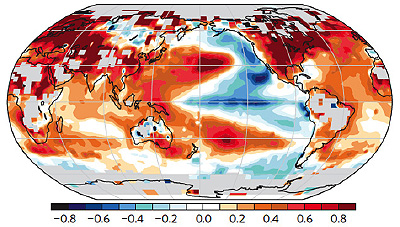Parked cars are deathtraps for dogs: On a 78-degree day, the temperature inside a parked car can soar to between 100 and 120 degrees in just minutes, and on a 90-degree day, the interior temperature can reach as high as 160 degrees in less than 10 minutes.
An example with “real numbers” (allegedly).
So outside the car over time (under a day in this case) of from 78 to 90 is compared with an inside-the-car increase from 120F to 160F. That is a 12F increase vs. a 40F increase inside the car.
The heat sink (the car) is warming at over twice the rate, the trend inside the car as it is outside the car.
We are, by analogy, measuring our temps largely from inside the car. And, yeah, the car cools faster at the same rate during the subsequent “cooling phase”.
So if there is no overall trend, there will be no divergence in trend as a result of spurious heat sink effect. But if there is a trend, either cooling or warming, that trend will be exaggerated.
